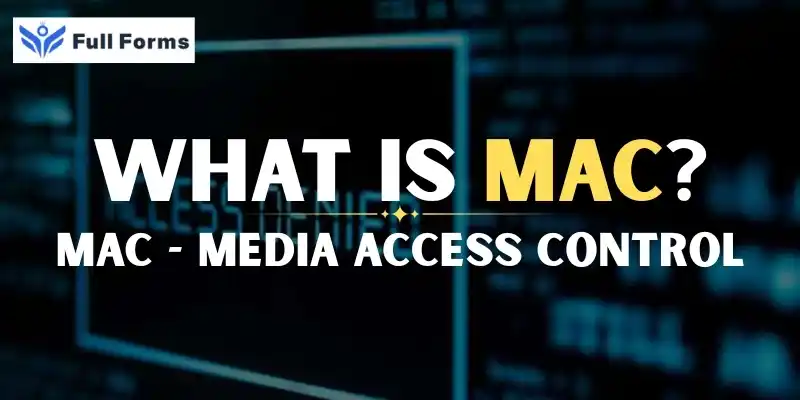Media Access Control
(MAC)

Description
What is the MAC (Media Access Control)?
Have you ever thought about how computers and other devices on a network "talk" to each other without everyone talking at once? Just like people follow rules in conversations so they don't interrupt each other, computers do too. One of the most important sets of rules is called Media Access Control, or MAC.
Let's talk about what MAC means, how it works, and why it's important in simple terms.
What Does MAC Mean?
The acronym MAC stands for Media Access Control. It is a part of computer networking that controls how devices use and share the communication medium, such as Wi-Fi or Ethernet cables.
In simpler terms, MAC controls when and how devices can talk to each other, so there is no confusion or "noise" on the network.
What is the need for Media Access Control?
Think about being in a classroom where everyone is talking at once. It's loud, messy, and no one gets what you're saying. If all the devices on a network sent data at the same time, the same thing would happen.
By setting rules and times for communication, MAC helps avoid this problem. It makes sure:
- Only one device can send data at a time.
- There is no loss or corruption of data.
- Devices wait for their turn to "talk."
What Role Does MAC Play in the Network?
The OSI model shows how computer networks work in layers. MAC is part of the Data Link Layer (Layer 2).
At this level, MAC is in charge of:
- Assigning a unique MAC address to each device.
- Managing how devices use the physical link.
- Helping get data to the right device.
What is a MAC Address?
A MAC address is a unique number that every device that connects to a network has. This includes your phone, laptop, and printer. It is a unique code that is made up of 12 characters, usually numbers and letters, like this:
00:1A:2B:3C:4D:5E
This is the address:
- The hardware maker of the device gave it.
- The device's network interface card (NIC) stores it.
- Used to find the device on a local network, like your Wi-Fi.
Different kinds of MAC techniques
Different types of networks use different ways to control media access. These are the most common ones:
-
CSMA/CD (Carrier Sense Multiple Access with Collision Detection):
Used in wired Ethernet networks. Before sending data, devices "listen" to the cable to see if it's free. If two devices send data at the same time and it collides, they stop, wait, and try again. -
CSMA/CA (Carrier Sense Multiple Access with Collision Avoidance):
Used in Wi-Fi networks. Devices try to avoid collisions by waiting and checking. It's more careful than CSMA/CD because wireless signals can interfere more easily. -
Token Passing:
A small data packet called a "token" moves from one device to another. No collisions are allowed; only the device with the token can send data.
Benefits of Media Access Control
- It stops data collisions by making sure that only one device sends data at a time.
- Enhances Network Efficiency: Keeps communication clear and organized.
- Supports Multiple Devices: Makes it easy for a lot of devices to use the same medium.
- Improves Security: You can use MAC addresses to control which devices can connect to a network.
Real-Life Examples of MAC at Work
- MAC rules let both your phone and someone else's email check their email at the same time without any problems.
- MAC makes sure that everyone in an office can use a shared wired or wireless network fairly and efficiently.
- Some Wi-Fi routers let you set up a "MAC filter," which means that only devices that are on the list can connect to the network.
MAC vs. IP Address
| Feature | MAC Address | IP Address |
|---|---|---|
| Uniqueness | Only for the device (hardware) | Can be changed (software-based) |
| Layer | Layer 2: Data Link Layer | Layer 3: Network Layer |
| Use | Identifies device locally | Finds device all over the world |
| Example | 00:0A:E6:3E:FD:E1 | 192.168.1.2 |
You need both MAC and IP addresses. MAC addresses help things work on the network, while IP addresses help things move across the internet.
Final Thoughts
Media Access Control (MAC) is like a traffic light for your network; it tells devices when to stop, go, and wait. Without it, the digital world would be a mess, slow, and not very reliable.
MAC is an important part of keeping everything running smoothly, from watching videos to sending emails to playing games online. You may not see it, but you use it every day, and now you know how!
